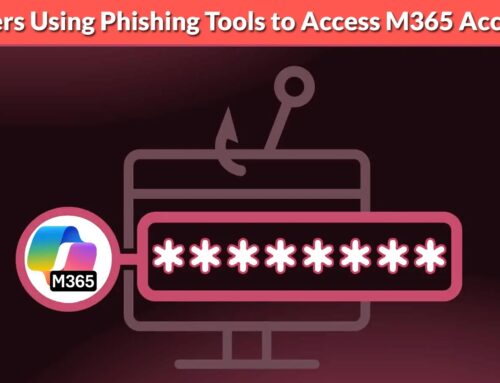
New ‘Sindoor Dropper’ Malware Targets Linux Systems with Weaponized .desktop Files
Sindoor Dropper: A New Threat Leverages Weaponized .desktop Files on Linux
The digital landscape consistently presents new challenges for cybersecurity professionals. A sophisticated new malware campaign, dubbed “Sindoor Dropper,” is actively targeting Linux systems, employing innovative spear-phishing tactics and a multi-stage infection chain. This campaign stands out due to its unusual and effective use of weaponized .desktop files, a technique that exploits user trust and system functionality.
The Sindoor Dropper leverages current geopolitical events, specifically the India-Pakistan conflict (referred to as Operation Sindoor), as a lure to entice victims. This social engineering approach is highly effective, preying on curiosity or concern to trick users into executing malicious files, thereby initiating the infection process. Understanding the mechanics of this attack is crucial for defenders responsible for Linux environments.
Weaponizing .desktop Files: A Stealthy Attack Vector
The most distinctive feature of the Sindoor Dropper campaign is its reliance on weaponized .desktop files. For those unfamiliar, .desktop files are configuration files used by desktop environments (like GNOME, KDE, XFCE) on Linux to launch applications, open specific directories, or execute commands. They are essentially shortcuts that can be highly customized.
Attackers manipulate these files by embedding malicious commands within them. When a user is tricked into clicking or opening such a weaponized .desktop file, the embedded malicious command is executed, often without visible indication to the user. This approach is particularly insidious because .desktop files are commonly exchanged and perceived as harmless shortcuts, not executable binaries.
Multi-Stage Infection Chain Explained
The Sindoor Dropper campaign doesn’t just rely on a single malicious file. It employs a multi-stage infection chain to ensure persistence and broader compromise. While specific details of each stage might vary, the general progression typically involves:
- Initial Compromise: A user executes the weaponized
.desktopfile, often delivered via spear-phishing emails or malicious websites. - Payload Download: The initial execution triggers the download of subsequent malicious components from attacker-controlled servers. This could include shell scripts, additional binaries, or further configuration files.
- Execution and Persistence: These downloaded components then execute, establishing persistence mechanisms to ensure the malware restarts with the system. This might involve modifying startup scripts, cron jobs, or systemd units.
- Data Exfiltration/Further Activity: Once established, the malware can then proceed with its primary objectives, such as exfiltrating sensitive data, establishing remote access, or becoming part of a botnet.
Remediation Actions and Best Practices
Defending against threats like Sindoor Dropper requires a multi-layered approach focusing on both technical controls and user education.
- User Awareness Training: Educate users about the dangers of spear-phishing, unrecognized file types, and the importance of verifying sources before opening attachments or clicking links. Emphasize that files related to current events should be viewed with extreme skepticism unless verified through official channels.
- Disable Auto-Execution of .desktop Files: Configure desktop environments to prompt users before executing
.desktopfiles downloaded from untrusted sources, or even disable auto-execution entirely for non-local files. - Principle of Least Privilege: Ensure users operate with the minimum necessary privileges. This limits the potential damage if a malicious script is executed.
- Endpoint Detection and Response (EDR): Implement EDR solutions capable of monitoring process execution, file system changes, and network connections for anomalous activity that might indicate a compromise.
- Regular Patch Management: Keep operating systems and all installed software up-to-date to patch known vulnerabilities. While this specific attack doesn’t rely on a CVE directly for the
.desktopfile execution, ensuring system hygiene is paramount. No specific CVE has been assigned to the.desktopfile execution method as it leverages expected functionality rather than a software flaw. - Network Segmentation: Isolate critical systems and segment networks to contain the lateral movement of malware in case of a successful breach.
- File Type Restrictions: Implement email gateway and web proxy filters to block or quarantine potentially dangerous file types, including unknown or suspicious
.desktopfiles.
Detection and Analysis Tools
Effective defense against the Sindoor Dropper and similar threats relies on robust detection and analysis capabilities. Below are some tools that can aid in this effort:
| Tool Name | Purpose | Link |
|---|---|---|
| YARA Rules | Signature-based detection of known malware patterns in files. | https://yara.readthedocs.io/ |
| ClamAV | Open-source antivirus engine for detecting trojans, viruses, malware across platforms. | https://www.clamav.net/ |
| Volatility Framework | Advanced memory forensics for incident response and malware analysis. | https://www.volatilityfoundation.org/ |
| Wireshark | Network protocol analyzer for capturing and analyzing network traffic patterns, identifying C2 communication. | https://www.wireshark.org/ |
| Linux Audit Daemon (auditd) | System call auditing to monitor user and process activities. | Varies by distribution (e.g., man pages for auditd) |
Conclusion
The Sindoor Dropper campaign highlights the evolving threat landscape where attackers constantly seek novel ways to bypass defenses. By leveraging weaponized .desktop files and exploiting social engineering vulnerabilities related to current events, this malware poses a significant risk to Linux environments. A strong cybersecurity posture, combining vigilant user education, robust technical controls, and proactive threat intelligence, is essential to mitigate such sophisticated attacks.





